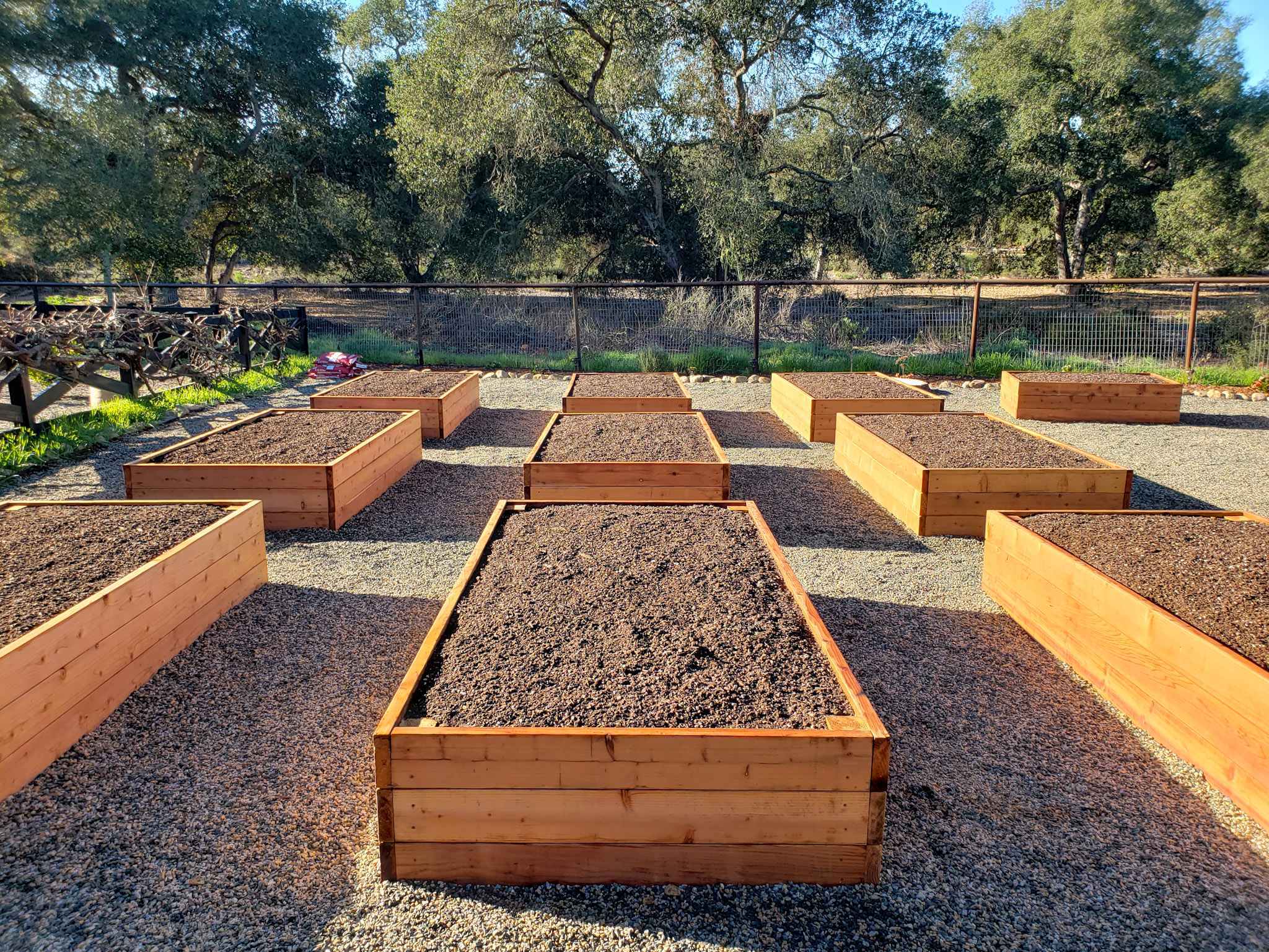Home>Gardening Basics>Understanding Soil>How Much Worm Castings To Add To Soil


Understanding Soil
How Much Worm Castings To Add To Soil
Published: February 5, 2024
Learn how to improve soil health by understanding the right amount of worm castings to add. Enhance your gardening with our expert tips.
(Many of the links in this article redirect to a specific reviewed product. Your purchase of these products through affiliate links helps to generate commission for Chicagolandgardening.com, at no extra cost. Learn more)
Table of Contents
Introduction
Introduction
Soil is a living, breathing ecosystem that supports the growth of plants and sustains life on Earth. One of the key components in maintaining healthy soil is the addition of organic matter, and worm castings are a valuable source of this essential material. Worm castings, also known as vermicast, are the nutrient-rich excrement produced by earthworms as they digest organic material. This natural byproduct is teeming with beneficial microorganisms, enzymes, and plant nutrients, making it a powerful soil amendment for gardeners and farmers alike.
Worm castings play a pivotal role in enhancing soil structure, promoting robust plant growth, and fostering a thriving ecosystem below the surface. As we delve into the world of soil health and sustainable gardening practices, understanding the significance of worm castings and their optimal application becomes increasingly imperative. This article aims to shed light on the benefits of incorporating worm castings into soil, as well as provide insights into determining the appropriate quantity to add and the best methods for application. Let's embark on a journey to uncover the secrets of maximizing the potential of soil through the remarkable contributions of worm castings.
Benefits of Worm Castings
Benefits of Worm Castings
Worm castings offer a plethora of benefits that significantly contribute to soil fertility and plant vitality. These remarkable benefits stem from the unparalleled composition of worm castings, which sets them apart as a superior soil amendment. Here are some of the key advantages of incorporating worm castings into soil:
- Rich Nutrient Content: Worm castings are packed with essential nutrients such as nitrogen, phosphorus, potassium, calcium, and magnesium. These vital nutrients are present in forms that are readily available to plants, ensuring optimal uptake and utilization.
- Enhanced Soil Structure: The organic matter in worm castings improves soil structure by enhancing aeration, water retention, and drainage. This fosters a balanced and fertile soil environment, promoting healthy root development and microbial activity.
- Suppressed Plant Diseases: The beneficial microorganisms and enzymes present in worm castings contribute to a thriving soil microbiome, which can help suppress harmful pathogens and diseases that may affect plant health.
- Stimulated Plant Growth: The combination of beneficial microorganisms, plant growth hormones, and nutrient availability in worm castings promotes vigorous plant growth, leading to increased yields and improved overall plant health.
- Environmental Sustainability: By utilizing worm castings as a natural soil amendment, gardeners and farmers can reduce their reliance on chemical fertilizers and pesticides, thereby promoting environmentally sustainable agricultural practices.
These benefits underscore the invaluable role of worm castings in nurturing soil health and fostering thriving plant ecosystems. As we delve deeper into the realm of soil enrichment, it becomes evident that the incorporation of worm castings offers a multitude of advantages that contribute to sustainable and bountiful harvests.
Determining the Amount of Worm Castings to Add
Determining the Amount of Worm Castings to Add
When it comes to enriching soil with worm castings, determining the appropriate quantity to add is crucial for maximizing their benefits without overapplication. The ideal amount of worm castings to incorporate into soil depends on various factors, including the type of plants, the current condition of the soil, and the specific goals of soil enhancement. Here are some essential considerations for determining the optimal amount of worm castings to add:
- Soil Type and Condition: Assessing the texture, structure, and fertility of the soil is essential in determining the amount of worm castings needed. Soil tests can provide valuable insights into existing nutrient levels and help gauge the soil’s overall health, guiding the application of worm castings accordingly.
- Plant Requirements: Different plants have varying nutrient needs and growth patterns. Understanding the specific requirements of the plants being cultivated is pivotal in calculating the appropriate dosage of worm castings to support their growth and development.
- Application Goals: Whether the goal is to rejuvenate depleted soil, boost seedling growth, or enhance overall plant vigor, the intended outcomes of soil enrichment influence the quantity of worm castings to be added.
- Recommended Guidelines: While general recommendations suggest adding 10-20% of worm castings by volume to potting mixes or garden soil, specific guidelines from reputable sources or agricultural extension services can offer tailored recommendations based on local conditions and plant varieties.
By carefully considering these factors and conducting thorough assessments, gardeners and farmers can determine the precise amount of worm castings required to optimize soil fertility and support thriving plant growth. The goal is to strike a balance that harnesses the benefits of worm castings while aligning with the unique needs of the soil and its cultivated plants.
Applying Worm Castings to Soil
Applying Worm Castings to Soil
Once the appropriate quantity of worm castings has been determined, the next crucial step is to apply them effectively to the soil. Proper application methods ensure that the valuable nutrients and beneficial microorganisms present in worm castings are distributed optimally, promoting their integration into the soil ecosystem. Here are some recommended techniques for applying worm castings to soil:
- Topdressing: Sprinkling a layer of worm castings on the soil surface around plants, shrubs, or trees provides a slow-release source of nutrients. This method is particularly beneficial for established plants and can help improve soil structure over time.
- Incorporation into Planting Holes: When transplanting or establishing new plants, mixing worm castings into the backfill soil placed in planting holes can provide an immediate nutrient boost for young roots, promoting healthy establishment and early growth.
- Seed Starting and Potting Mixes: Adding worm castings to seed-starting mixes or potting soil enhances the germination and early growth of seeds and seedlings. The gentle, nutrient-rich environment created by worm castings supports robust root development and overall plant vigor.
- Soil Amendments and Compost: Incorporating worm castings into compost piles or using them as a component of custom soil amendments further enriches the organic matter and nutrient content, enhancing the overall quality of the soil blend.
These application methods ensure that the benefits of worm castings are effectively harnessed to promote soil fertility, plant growth, and long-term sustainability. By integrating worm castings into various stages of plant cultivation and soil management, gardeners and agricultural practitioners can harness the full potential of this natural, organic resource.
Conclusion
Conclusion
As we conclude our exploration of the remarkable contributions of worm castings to soil health and plant vitality, it becomes evident that these humble excretions of earthworms hold immense potential for sustainable agriculture and gardening practices. The benefits of worm castings, ranging from their rich nutrient content to their ability to enhance soil structure and support robust plant growth, underscore their significance as a valuable soil amendment.
By carefully determining the appropriate quantity of worm castings to add and employing effective application methods, gardeners and farmers can harness the transformative power of these natural fertilizers. Whether it’s rejuvenating depleted soil, promoting healthy seedling growth, or fostering a thriving soil microbiome, worm castings offer a versatile and sustainable solution for enhancing soil fertility and plant resilience.
As stewards of the land, it is our responsibility to embrace practices that prioritize the long-term health and vitality of the soil. The integration of worm castings into soil management strategies represents a harmonious partnership with nature, fostering a balanced and fertile ecosystem that sustains life and nourishes bountiful harvests.
In essence, the journey of enriching soil with worm castings transcends the realm of agricultural science; it embodies a profound connection with the Earth and the intricate web of life that thrives beneath our feet. As we continue to cultivate the land and nurture plant life, let us embrace the wisdom of earthworms and the invaluable gift they bestow upon the soil, paving the way for a greener, more vibrant future.




